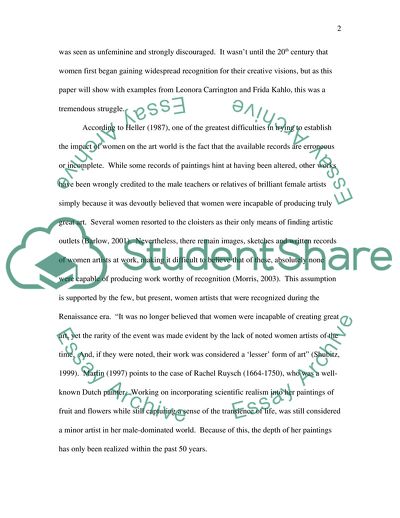Cite this document
(Gender Issues in Art Coursework Example | Topics and Well Written Essays - 2250 words, n.d.)
Gender Issues in Art Coursework Example | Topics and Well Written Essays - 2250 words. https://studentshare.org/social-science/1707313-discuss-in-terms-of-gender-issues-from-examining-the-way-that-any-well-documented-female-artist-has-had-problems-in-terms-of-opportunity-career-building
Gender Issues in Art Coursework Example | Topics and Well Written Essays - 2250 words. https://studentshare.org/social-science/1707313-discuss-in-terms-of-gender-issues-from-examining-the-way-that-any-well-documented-female-artist-has-had-problems-in-terms-of-opportunity-career-building
(Gender Issues in Art Coursework Example | Topics and Well Written Essays - 2250 Words)
Gender Issues in Art Coursework Example | Topics and Well Written Essays - 2250 Words. https://studentshare.org/social-science/1707313-discuss-in-terms-of-gender-issues-from-examining-the-way-that-any-well-documented-female-artist-has-had-problems-in-terms-of-opportunity-career-building.
Gender Issues in Art Coursework Example | Topics and Well Written Essays - 2250 Words. https://studentshare.org/social-science/1707313-discuss-in-terms-of-gender-issues-from-examining-the-way-that-any-well-documented-female-artist-has-had-problems-in-terms-of-opportunity-career-building.
“Gender Issues in Art Coursework Example | Topics and Well Written Essays - 2250 Words”. https://studentshare.org/social-science/1707313-discuss-in-terms-of-gender-issues-from-examining-the-way-that-any-well-documented-female-artist-has-had-problems-in-terms-of-opportunity-career-building.


